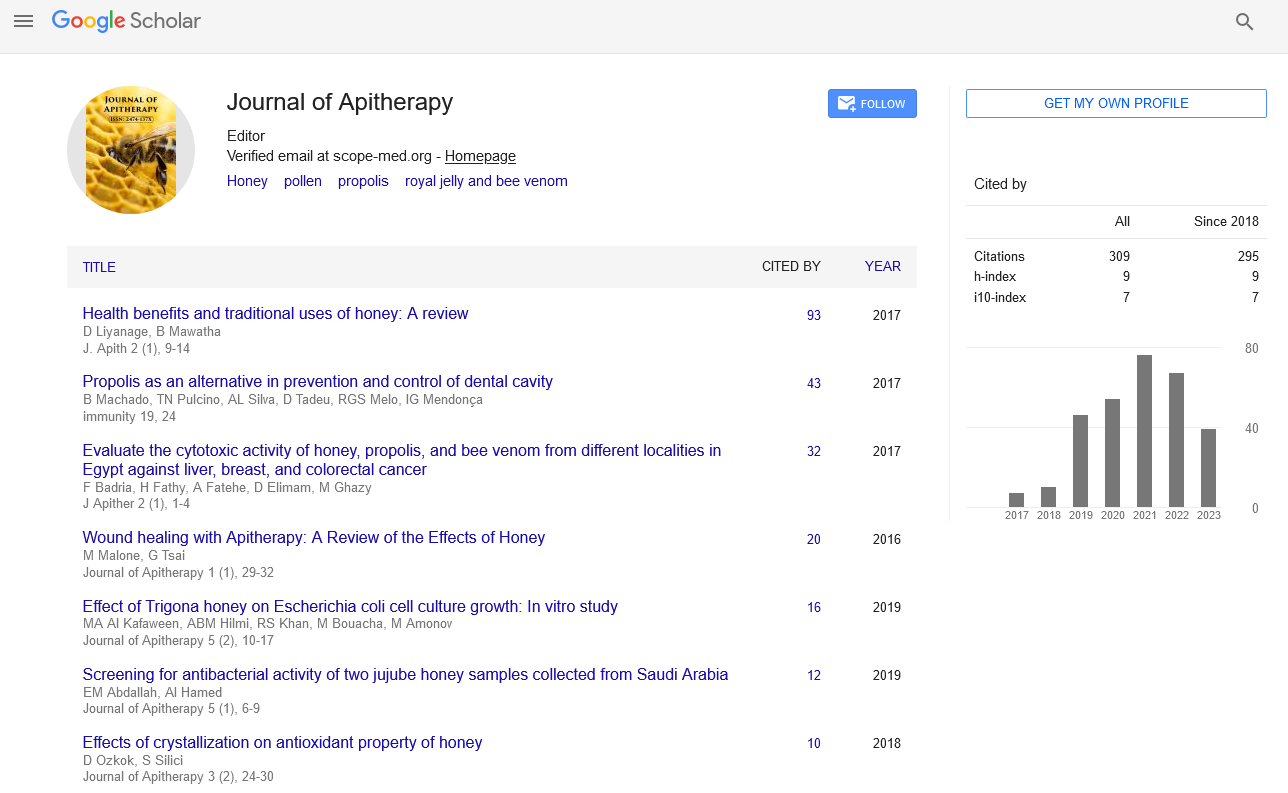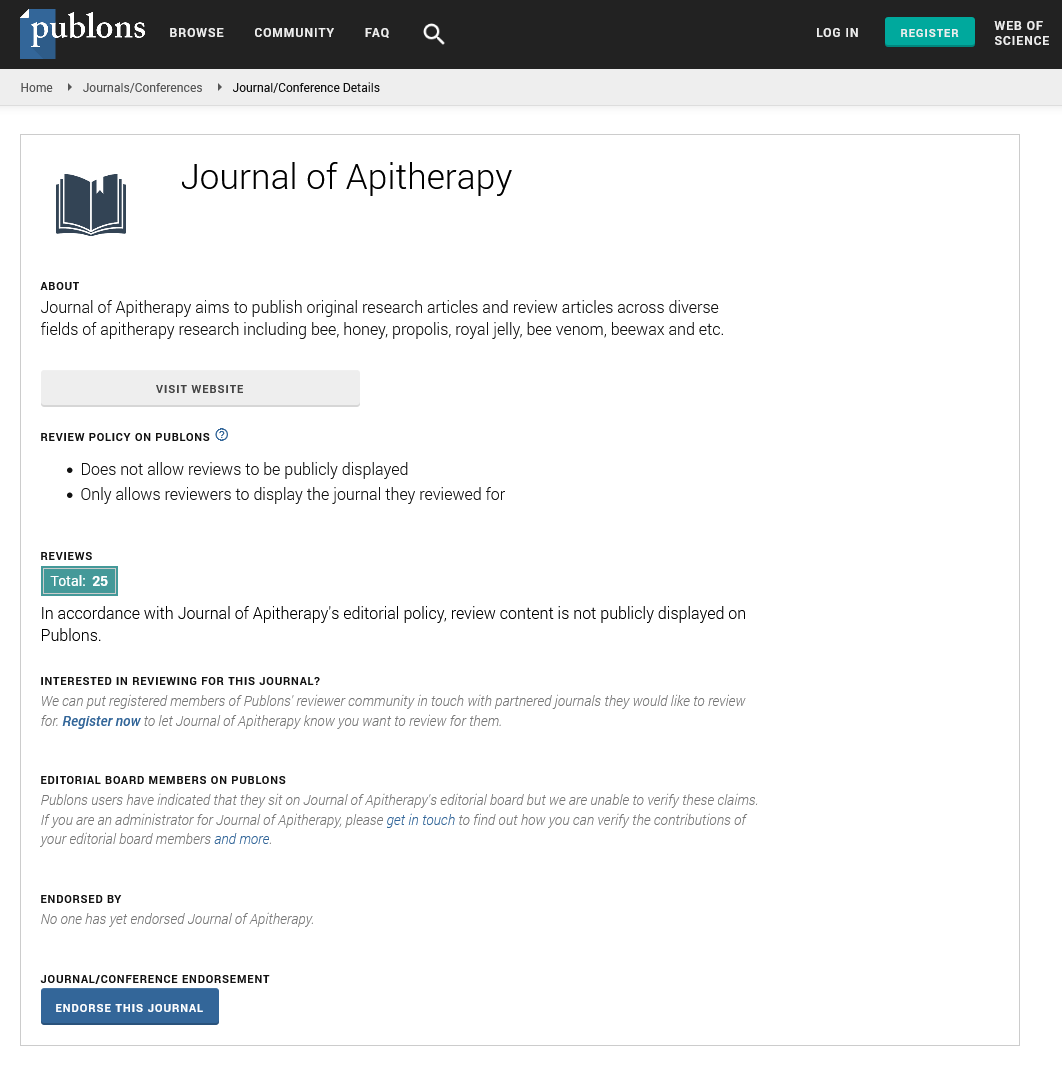Short Commentary - Journal of Apitherapy (2021)
Primary Mitochondrial Disorders
Suresh Vatsyayann*Sr. Consultant. Suresh Vatsyayann, Medicine & Surgery, The Family Clinic, India, Email: SureshVatsyayann@yahoo.com
Published: 30-Jun-2021
Loss of function in mitochondria, the key organelle responsible for cellular energy production, can result in the excess fatigue and other symptoms that are common complaints in almost every chronic disease. At the molecular level, a reduction in mitochondrial function occurs as a result of the following changes: a loss of maintenance of the electrical and chemical transmembrane potential of the inner mitochondrial membrane, alterations in the function of the electron transport chain, or a reduction in the transport of critical metabolites into mitochondria. In turn, these changes result in a reduced efficiency of oxidative phosphorylation and a reduction in production of adenosine-5′-triphosphate (ATP). Several components of this system require routine replacement, and this need can be facilitated with natural supplements. Clinical trials have shown the utility of using oral replacement supplements, such as L-carnitine, alpha-lipoic acid (α-lipoic acid [1,2-dithiolane-3-pentanoic acid]), coenzyme Q10 (CoQ10 [ubiquinone]), reduced nicotinamide adenine dinucleotide (NADH), membrane phospholipids, and other supplements.
Combinations of these supplements can reduce significantly the fatigue and other symptoms associated with chronic disease and can naturally restore mitochondrial function, even in long-term patients with intractable fatigue. Mitochondrial dysfunction, characterized by a loss of efficiency in the electron transport chain and reductions in the synthesis of high-energy molecules, such as adenosine-5′-triphosphate (ATP), is a characteristic of aging, and essentially, of all chronic diseases. These diseases include neurodegenerative diseases, such as Alzheimer’s disease, Parkinson’s disease, Huntington’s disease, amyotrophic lateral sclerosis, and Friedreich’s ataxia; cardiovascular diseases, such as atherosclerosis and other heart and vascular conditions; diabetes and metabolic syndrome; autoimmune diseases, such as multiple sclerosis, systemic lupus erythematosus, and type 1 diabetes; neurobehavioral and psychiatric diseases, such as autism spectrum disorders, schizophrenia, and bipolar and mood disorders; gastrointestinal disorders; fatiguing illnesses, such as chronic fatigue syndrome and Gulf War illnesses; musculoskeletal diseases, such as fibromyalgia and skeletal muscle hypertrophy/atrophy; cancer; and chronic infections. It is well known among researchers that mitochondrial genetic or primary mitochondrial disorders contribute to mitochondrial dysfunction and secondary or acquired degenerative disorders. This review will concentrate on nongenetic or acquired mechanisms that could explain mitochondrial dysfunction and their replacement treatment with natural supplements and combinations of natural supplements, including vitamins, minerals, enzyme cofactors, antioxidants, metabolites, transporters, membrane-type phospholipids, and other natural supplements.
Mitochondrial dysfunction arises from an inadequate number of mitochondria, an inability to provide necessary substrates to mitochondria, or a dysfunction in their electron transport and ATP-synthesis machinery. The number and functional status of mitochondria in a cell can be changed by fusion of partially dysfunctional mitochondria and mixing of their undamaged components to improve overall function, the generation of entirely new mitochondria (fission), and the removal and complete degradation of dysfunctional mitochondria (mitophagy). These events are controlled by complex cellular processes that sense the deterioration of mitochondria, such as the depolarization of mitochondrial membranes or the activation of certain transcription pathways.
The ability of cells to produce almost all high-energy molecules such as ATP is directly related to the ability of mitochondria to convert the energy of metabolites to reduced nicotinamide adenine dinucleotide (NADH) and transfer electrons from NADH to the electron transport chain and eventually to molecular oxygen while pumping protons from the mitochondrial matrix across the inner mitochondrial membrane to the intermembrane space. This process creates a transmembrane proton gradient (Δp) and an electrochemical gradient (Δψm) across the mitochondrial inner membrane. The transmembrane potential created by the proton gradient then uses ATP synthase to flow protons back across the inner mitochondrial membrane and employs the energy from this process to drive adenosine diphosphate (ADP) phosphorylation to ATP.







